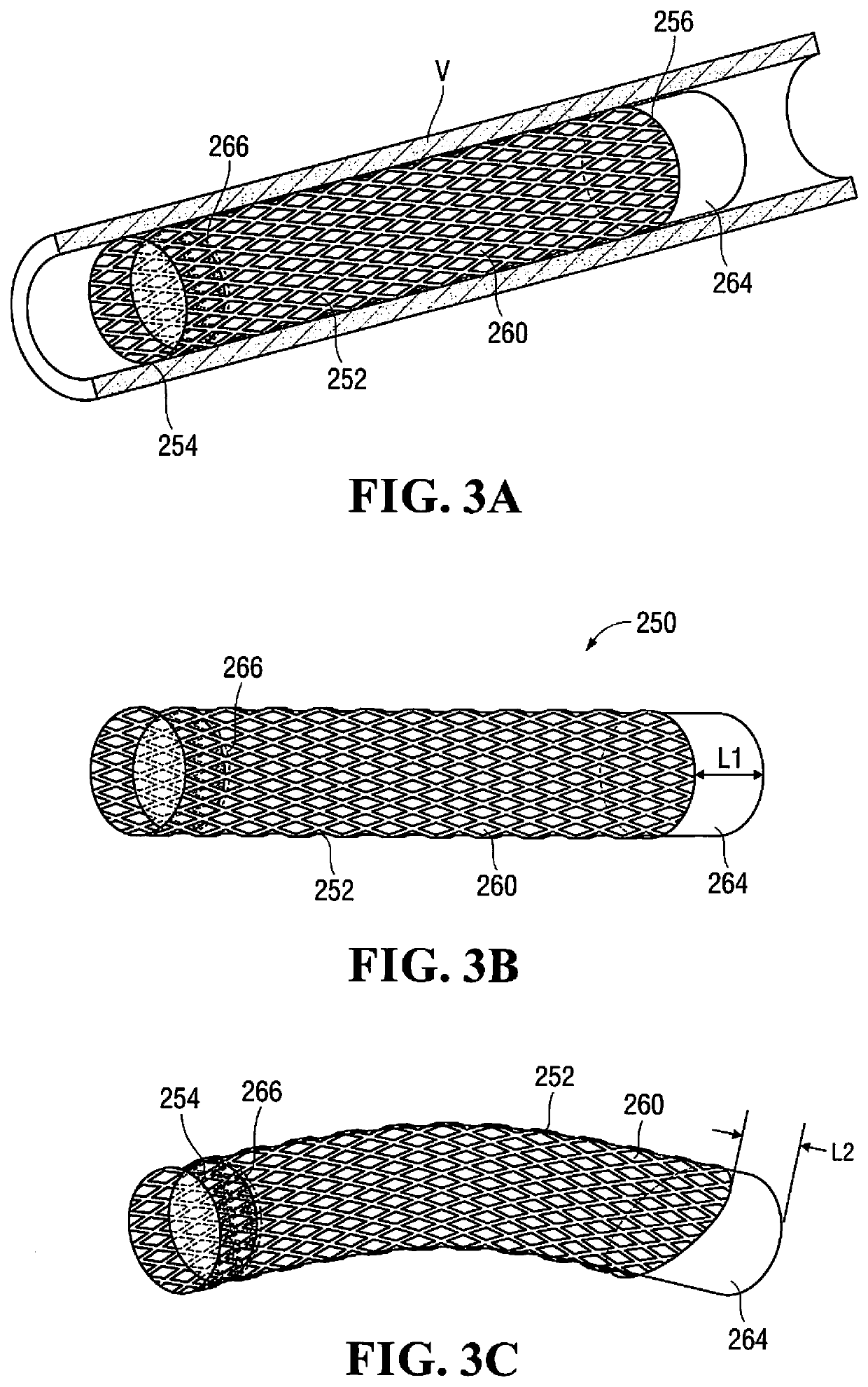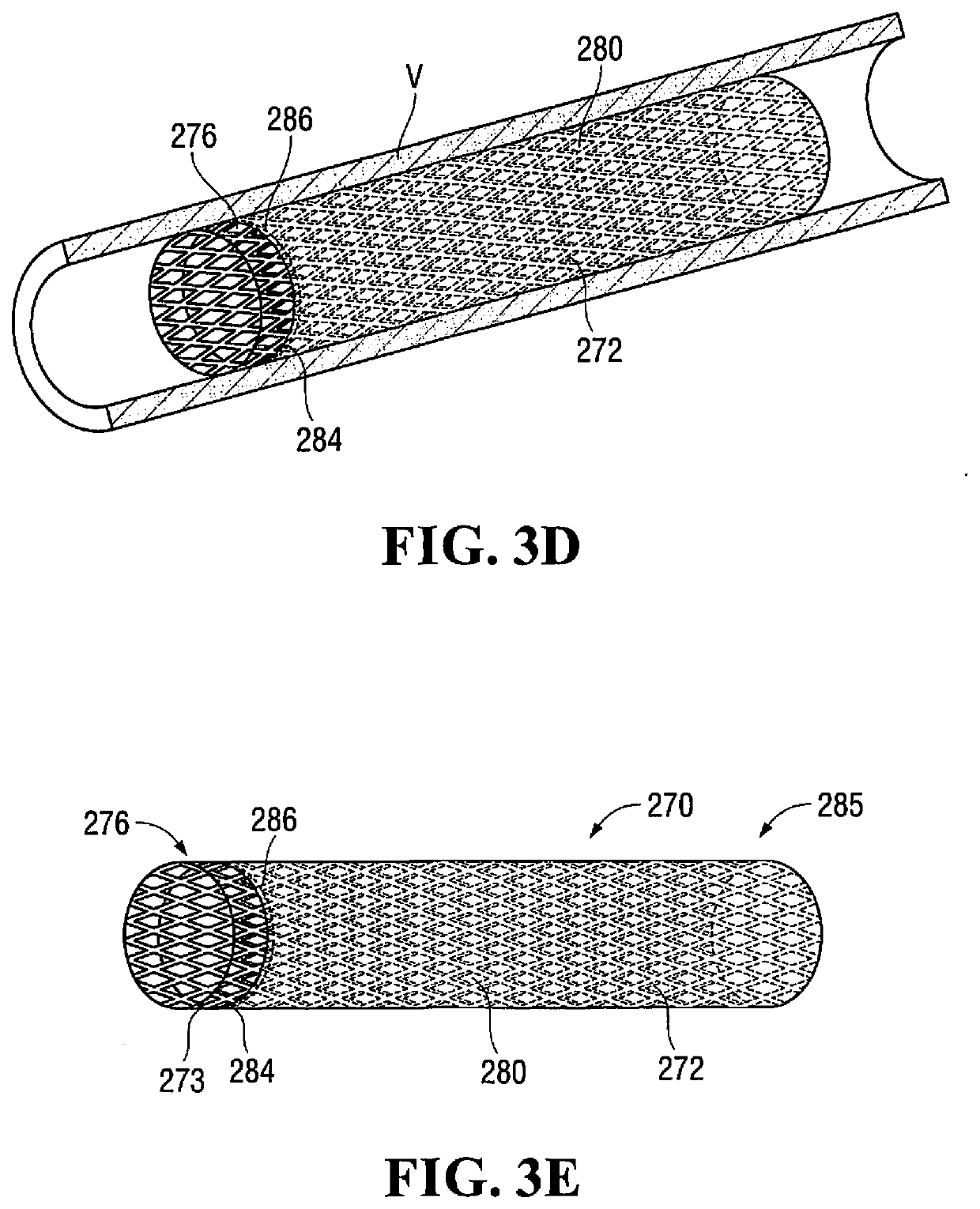Caped stent
a stent and capping technology, applied in the field of capping stents, can solve the problems of blood vessel difficulty, persistent blood flow, procedural complications, etc., and achieve the effect of effectively diverting blood flow away and safe and effective delivery and deploymen
- Summary
- Abstract
- Description
- Claims
- Application Information
AI Technical Summary
Benefits of technology
Problems solved by technology
Method used
Image
Examples
Embodiment Construction
[0103]The present invention provides a covered (caped) stent configured for delivery through vessels, such as tortuous vessels, for deployment in vessels to effectively divert blood flow away from an aneurysm, fistula, or ruptured vessel while allowing blood to flow to healthy tissue distal to the targeted treatment area and still resulting in blood stasis and thrombus formation inside the aneurysm, fistula, or other covered lesion, or otherwise sealing closed an unwanted hole or outpouching. The covered stents of the present invention can be utilized in the neuro-vasculature as well as in other tortuous anatomy outside of the brain, in luminal structures and in other anatomies.
[0104]The covered (caped) stents of the present invention reduce or prevent kinking of the stent body (frame) as it bends due to the curves in the vasculature. This increased flexibility of the covered stents of the present invention is achieved by the attachment and configuration of the covers which provides...
PUM
 Login to View More
Login to View More Abstract
Description
Claims
Application Information
 Login to View More
Login to View More - R&D
- Intellectual Property
- Life Sciences
- Materials
- Tech Scout
- Unparalleled Data Quality
- Higher Quality Content
- 60% Fewer Hallucinations
Browse by: Latest US Patents, China's latest patents, Technical Efficacy Thesaurus, Application Domain, Technology Topic, Popular Technical Reports.
© 2025 PatSnap. All rights reserved.Legal|Privacy policy|Modern Slavery Act Transparency Statement|Sitemap|About US| Contact US: help@patsnap.com



